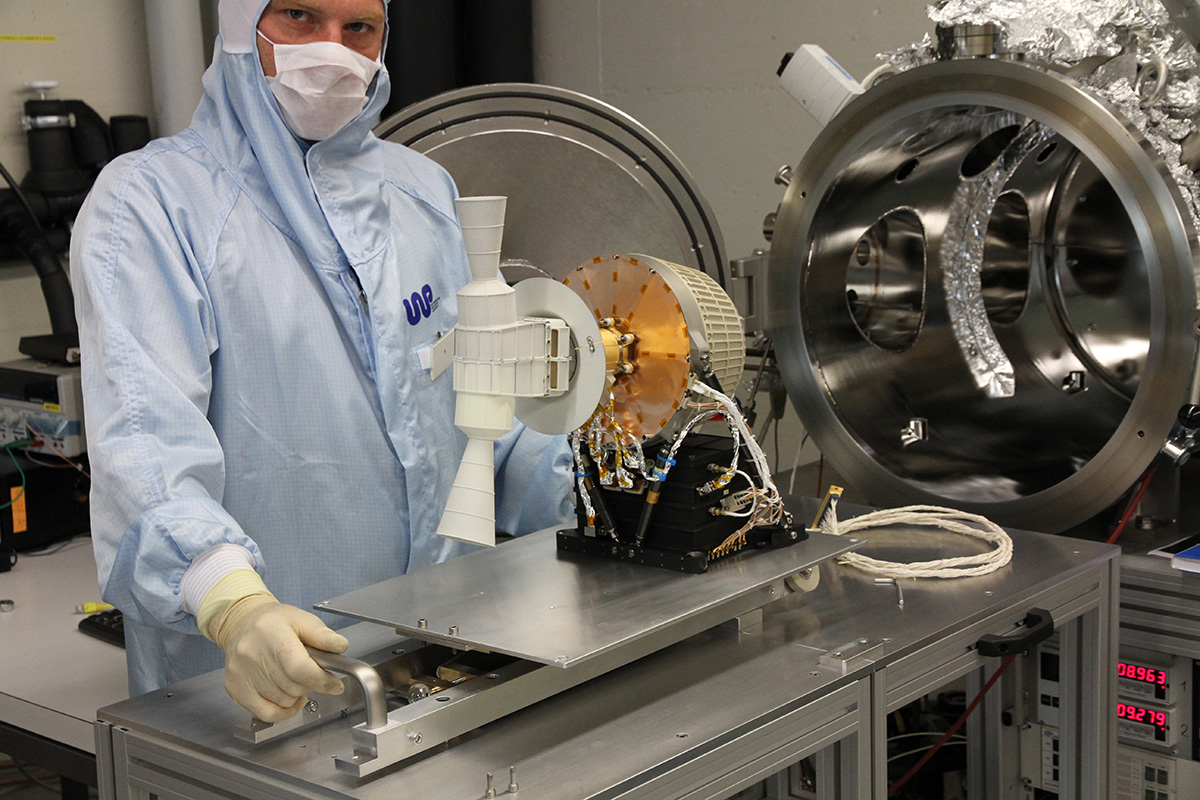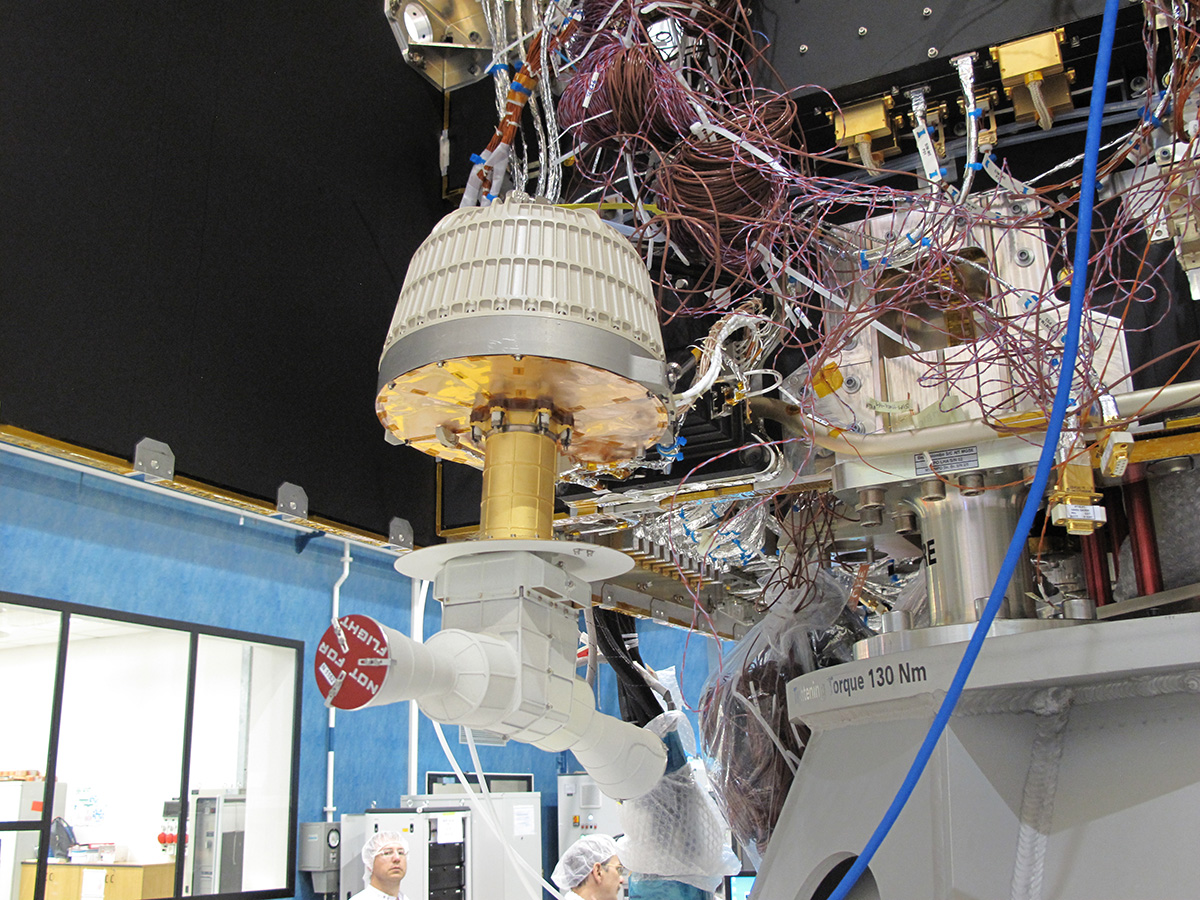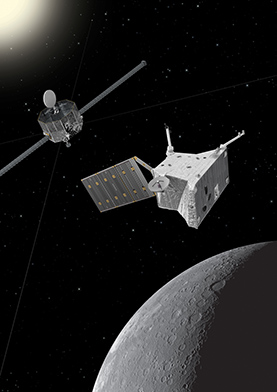Risky maneuvers on the way to Mercury
When the BepiColombo spacecraft takes off for Mercury on 20 October 2018, it will also be carrying an instrument from Peter Wurz, Professor of Experimental Space and Planetary Physics at the University of Bern. In an interview with "uniaktuell" he tells what the mass spectrometer STROFIO will have to do with Mercury.
You are the project lead of the novel mass spectrometer STROFIO on board the Mercury spacecraft BepiColombo. What is special about it and what is investigated by this instrument?
STROFIO is a mass spectrometer that will register the thin atmosphere of Mercury, which we call an exosphere, and measure its chemical composition. It is a new ion-optical design, which we calculated in great detail in Bern, and contributed the ion-optical system to the flight instrument. We will be part of the data analysis, of course, and already now we develop complex mathematical models describing Mercury’s exosphere that will be used to interpret the data.


When was the mission conceived? How were you involved?
The first concepts go back to the early 1990s. Nicolas Thomas and myself were part of the working group, the Science Advisory Group, to define this mission, which we completed in the year 2000. I inherited this task from the now retired professor Peter Bochsler, who was in this group before.
What are the biggest challenges on the way to Mercury? What could go wrong?
A big challenge is the closeness of Mercury to the Sun. This means that for the approach one needs a lot of energy to decelerate the spacecraft against the gravitational attraction of the Sun. BepiColombo uses a new solar-electric propulsion system during the cruise phase. In addition, there are several flybys at Earth, Venus, and Mercury to slow down the spacecraft even more. These manoeuvres have to be performed very precisely. Finally, the orbit insertion manoeuvre, which is done with a chemical propulsion system, also has to be performed very precisely, which will cause some strain on the nerves.

Why has the University of Bern been at the forefront of space research for 50 years?
Over many decades we proved again and again that we can build high-quality instruments for space research, with which we accomplished exciting scientific results in space research. We always have been a reliable partner in the many international collaborations, thus we are asked to participate in new missions with exciting scientific goals in the solar system.
How did you become a space explorer?
For the time after my post-doc position in the US I was looking for a position in Europa and had applied and interviewed at several places in different countries. At the Uni Bern they looked for somebody with experience in mass spectrometry. An area where I had lots of experience, so I came to Bern and perform mass spectrometry in space since then.
About the person

Peter Wurz has been Professor at the Physics Institute of the University of Bern since 2008 and, together with Willy Benz and Nicolas Thomas, heads the Department of Space Research and Planetology (WP). After training as an electronics engineer, he studied technical physics at the Vienna University of Technology. He then worked as a postdoctoral fellow at the Argonne National Laboratory, Chicago. He has been working at the University of Bern since 1992. His work focuses on the origin and evolution of planets by measuring the chemical composition of the atmospheres and surfaces of planets.
Contact
Prof. Dr. Peter Wurz
University of Bern, Physics Institute, Space Research & Planetary Sciences (WP)
Telephone direct: +41 31 631 44 26
E-mail: peter.wurz@space.unibe.ch
The BepiColombo mission
The BepiColombo mission comprises two spacecraft, the Mercury Planetary Orbiter (MPO) designed and built by ESA and the Mercury Magnetospheric Orbiter (MMO) designed and built by JAXA.
The two spacecraft will fly to Mercury together in a coupled system until reaching Mercury orbit. The MMO will then be released into a 400 km x 19’200 km orbit to allow detailed study of the magnetospheric interaction between the planet and the solar wind. The MPO will then descend to a 400 km x 1’500 km orbit which is optimum for remote-sensing of the planet's surface.
More information on the mission can be found on the ESA website
On board BepiColombo are instruments designed and built at the Institute of Physics of the University of Bern: The laser altimeter BELA and the novel mass spectrometer STROFIO.
The Laser Altimeter BELA is one of the most important experiments on board the MPO. The objective is to measure the shape, topography, and morphology of Mercury's surface. BELA will provide the absolute height and position of the topography in a Mercury-centered coordinate system.
The mass spectrometer STROFIO is part of SERENA on board the MPO. The objective of SERENA is the complete characterization of particle populations, ions and neutral particles in the environment of Mercury under the influence of solar radiation and solar wind.
Space research in Bern: at the forefront of world technology for 50 years
Bern's space research in figures shows an impressive portfolio: 25 times instruments with rockets have flown into the upper atmosphere and ionosphere (1967-1993), 9 times on balloon flights into the stratosphere (1991-2008), 33 instruments have flown on space probes, and a satellite was built (CHEOPS, launch 1st half 2019).
The successful work of the Department of Space Research and Planetology (WP) of the Physics Institute of the University of Bern was strengthened by the establishment of a university centre of excellence, the Center for Space and Habitability (CSH). The Swiss National Science Foundation also awarded the University of Bern the National Centre of Competence in Research (NCCR) PlanetS, which it manages jointly with the University of Geneva.
Further information
ABOUT THE AUTHOR
Brigit Bucher is Head of Media Relations in the Communication and Marketing Office at the University of Bern.